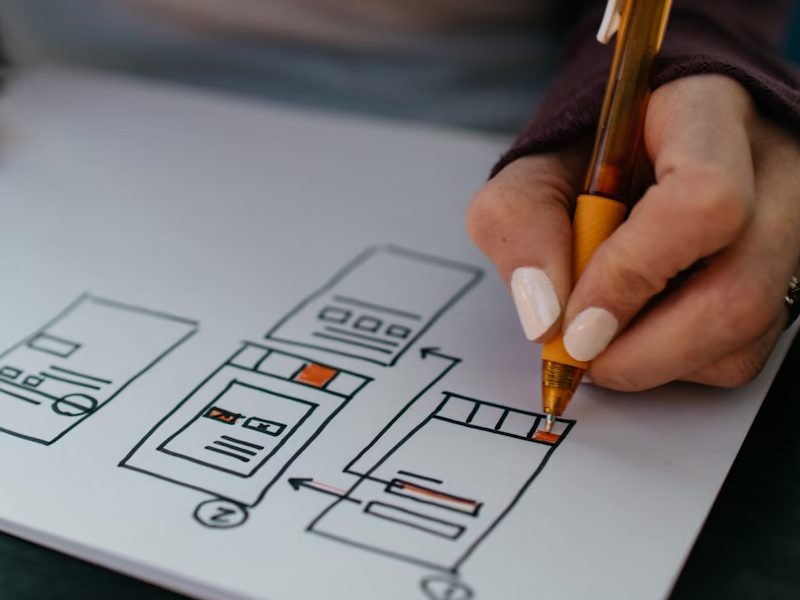Oftentimes, people only view UI design as a purely artsy sphere, thinking that not a lot more than having an eye for aesthetics stands behind it. However, this could not be further away from the truth! In reality, just being able to identify which colors and typography would better suit a design from a visual perspective is just a small percentage of what makes up the role of a UI designer.
Just as with many other fields in the work market, designers need to have a pretty varied set of skills in order to excel at their jobs. For example, bartenders do not only need to be experts in drink preparation but also really good with their soft skills and understanding of human typologies. Politicians cannot only know the law and how the state works, but they also need to be great communicators and have excellent problem-solving skills.
In a similar manner, the ever-evolving realm of design does not only require UI UX designers to be able to make a digital product look pretty, but it involves a brief understanding of some psychological aspects of the human mind and consumer behavior. But before we dive into how psychology interacts with user interface design, let’s see exactly what UI refers to.
UI design (user interface design) represents the visuals – how a product looks. It creates an immediate impact, and it is the first impression we make when we interact with a product. Adobe even said that 38% of users lose interest in an app or website if it lacks engagement or simply if it looks bad – that’s how important it is.
A user interface is what we see and interact with when using a digital product. It’s the touchscreen of your phone or computer. Or even your car’s touchpad to adjust the temperature or change the song on shuffle. A UI design is all about creating a pretty and interactive platform while also making sure that the product is as intuitive and visually appealing as possible.
In order for us, as UI/UX designers to be able to design successful and intuitive user interfaces, we require certain traits such as empathy and emotional contagion. It is quite simple - unless we have a deep understanding of the needs and preferences of our target audience, we will not be able to make suitable user interfaces for them.
This will be our starting point for any design process - finding out as much as we can about the users we want to attract to our websites and apps. For example, if we were working on the UI design of a fashion app, we could start our research by studying various influencers from this niche that activate on social media platforms such as TikTok and Instagram. In their likes, comments, and follower list, we will surely find people who are fashion enthusiasts and we can observe how they interact with content, as well as what content they generally consume.
At its core level, UI design is supposed to evoke a certain feeling in the user. Whether it is excitement, joy, satisfaction, curiosity, and so on, a successful design will communicate something. There are a couple of means, that are also backed up by psychologists, through which we can ignite emotions in the users through our UI designs.
- Colors. In psychology, color theory is extremely important, as it guides us to choose different shades and palettes based on our context and goal. A very well-known example of using color, because it has a certain meaning in UI UX design, is Netflix. Their user interface is black with a red logo to create a premium cinematic feeling. This provides users with a peculiar user experience.
- Gestalt principles. These psychology design principles can be really helpful when it comes to creating user interfaces. There are six Gestalt principles that are often applied in UI UX design: proximity, similarity, continuation, closure, figure/ground, and symmetry & order (which is also called prägnanz).
- Pattern Recognition. You have probably noticed that plenty of websites and apps have common principles and elements. This is not by accident, and psychology has also taught us an important lesson about our users. For example, when an Apple user purchases their latest product, they will expect the user interface to have a minimalist design, that is intuitive, and elegant, but also simple. In the same manner, we need to establish a few patterns for our designs in order for them to be well-received.
We at uinkits understand the importance of inputs in great user experiences and creating amazing UI designs. That’s why we’ve developed a Figma UI Kit with design components that include these essential UI elements that enable you to design intuitive and user-friendly interfaces effortlessly.
“You press the button, we do the rest.” – Kodak.
Inspired by this iconic tagline from Kodak, we believe in simplifying the design process for you. Our Figma UI Kit, uinkits, is a complete design system with UI components that allows you, as a UI UX designer, to create your products as quickly as pressing a button.
Our design system includes UI components, icons, variables, cards, buttons and everything you need for your design process. All you have to do is take your UI design component needed, and you’re ready to use it in your designs!








